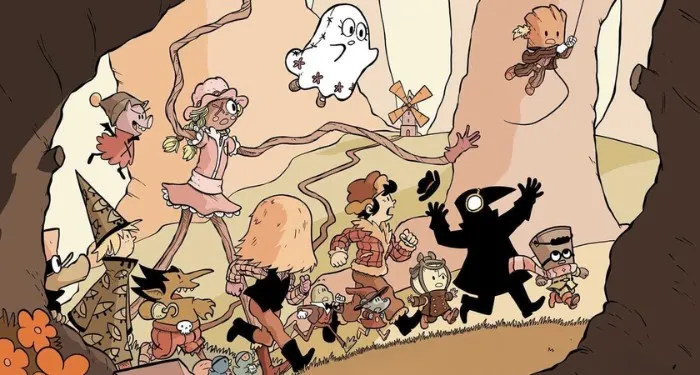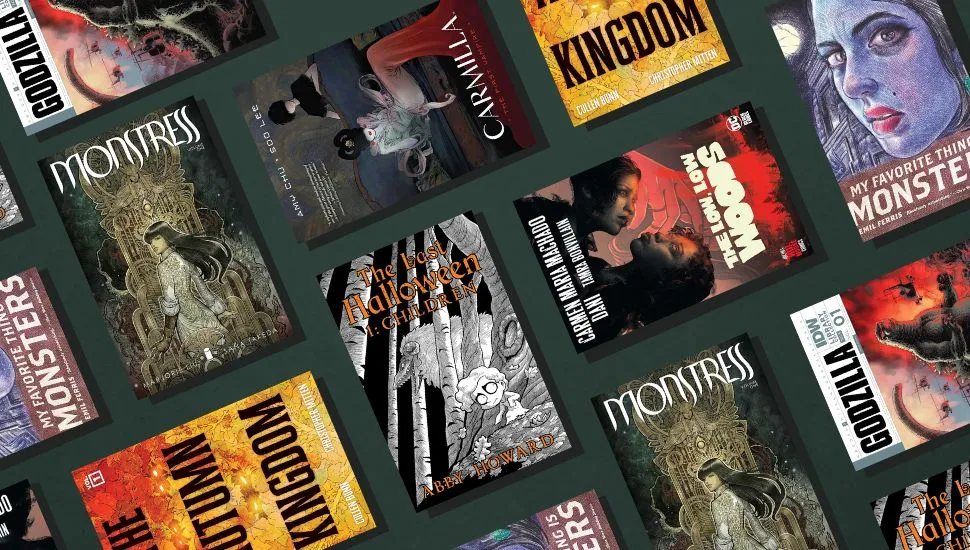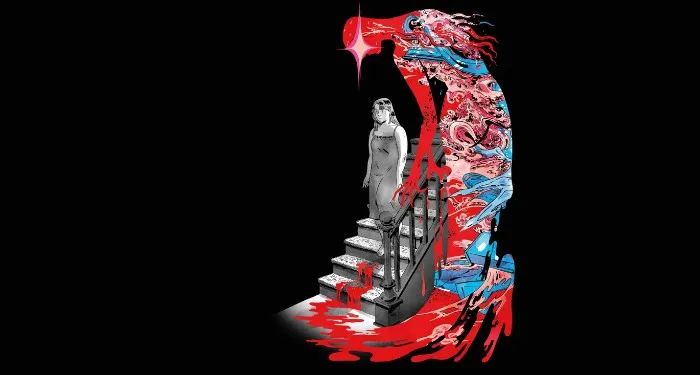Four hundred years ago Robert Burton concluded his majestic (and majestically unwieldy) treatise The Anatomy of Melancholy with a few words of distilled wisdom that remain as useful for sufferers of depression now as they were then: “Be not solitary, be not idle, SPERATE MISERI CAVETE FELICES” (unhappy ones, have hope; happy ones, be cautious). Hope is the golden promise of every therapeutic encounter: through the judicious application of medical science, allied with human kindness, one’s suffering might be eased, one’s dignity and autonomy honored. This remains true even when the condition is one that cannot be cured.
Psychiatrists, psychotherapists, and primary care physicians like me try to meet and sustain those hopes every day in our clinical practice. Samuel Taylor Coleridge observed that “in the treatment of nervous diseases, he is the best physician who is the most ingenious inspirer of hope.” In 1850 S.B. Woodward, the superintendent of a Massachusetts state asylum, wrote of good psychiatric care, “The mind must be managed, hope inspired, and confidence secured.” Kay Redfield Jamison, a professor of psychiatry and behavioral sciences at Johns Hopkins and a practicing psychotherapist, says that with Fires in the Dark she set out to write a book about healing but instead wrote one about being a good healer. It’s also a book about hope. Her exploration of what makes for an effective healer is interwoven with much biography (notably of Paul Robeson, William Osler, and W.H.R. Rivers) and autobiography (readers will be reminded of Jamison’s superb 1995 memoir about her bipolar illness, An Unquiet Mind). It’s a wistful, celebratory book, digressive and discursive, sometimes melancholy, always enlightening.
Jamison examines Paul Robeson’s polymathic achievements in the light of his own bipolar illness and repeated deep, suicidal depressions. Robeson was thwarted by America’s savage midcentury racism, and his “sense of moral purpose gave strength to tens of thousands of those less strong,” despite or perhaps because he carried so many wounds. Jamison describes how his legacy was poisoned by the anti-Communist witch hunts of the period that barred him from traveling or performing. He was sympathetic to the Soviet Union and told the filmmaker Sergei Eisenstein, “Here [in Russia] I am not a Negro but a human being. Before I came I could hardly believe that such a thing could be.” When he was summoned in 1956 to testify before the House Un-American Activities Committee, he was asked (by the Republican representative Gordon Scherer) why he hadn’t stayed in Russia, where he felt so at home. He replied, “Because my father was a slave, and my people died to build this country, and I am going to stay here and have a part of it just like you. And no Fascist-minded people will drive me from it. Is that clear?”
William Osler was a titan of the Edwardian medical world. A graduate of McGill University, one of the founders of the Johns Hopkins School of Medicine, later a professor at Oxford, an advocate of bedside teaching and the vocation of medicine, he was famous for the much-paraphrased dictum “It is much more important to know what sort of patient has a disease than what sort of disease a patient has.” He was by many accounts a melancholy man even before his only surviving son was killed in the trenches of World War I. Osler “taught that hope should be dispensed as freely as potions, or more so.”
Jamison also devotes a chapter to the writings of Alice Fitzgerald and Mary Borden, who served as nurses in the dressing stations of that war, showing just how often good nursing, more than good medicine, is the key to healing. Jamison quotes Violetta Thurstan’s A Text Book of War Nursing (1917), which agrees with Osler as to the importance not only of clinician resilience but of maintaining and dispensing hope. Nurses, Thurstan wrote, “must be able to bear the gigantic waste and pity of it all, the endless killing and maiming and still keep cheerful and well-balanced and always seeing the best side of things.”
“This book looks at what makes a healer great,” writes Jamison, “and which qualities are shared by healer and priest.” Osler and W.H.R. Rivers were both sons of Anglican priests, and to look more closely at the connections between the roles of therapist and priest Jamison delves into the life of Rivers, an anthropologist and psychiatrist made famous by his work with shell-shocked officers at Edinburgh’s Craiglockhart War Hospital during World War I. Rivers wrote that “psycho-therapeutics would seem to be the oldest branch of medicine” and that “some of the modern measures of the physician are little more than his adoption of modes of treatment which have long been familiar, in the form of confession, to the priest.” Carl Jung, writing in 1936, concurred: “My method, like Freud’s, is built up on the practice of confession.”
Jamison takes a long excursion into what’s known of the Aesculapian healing temples of ancient Greece, where priests made use of “magic, religion, drama and music, suggestion, surgery, drugs and herbs. Some of their methods—suggestion and interpretation of dreams—seem ahead of their time.” The best physicians know that suggestion and faith are powerful treatments, and that expectations of health and of healing can often become self-fulfilling—for good and for bad. She quotes Morag Coate, who wrote that if a patient believes in God, then God is “a real person to the patient and to be discussed as such.” It pays to harness your patient’s beliefs.
Rivers’s most famous patient was the poet Siegfried Sassoon. (Wilfred Owen, who was also billeted at Craiglockhart, was cared for by another psychiatrist there, Arthur Brock.) Rivers adapted what he’d learned as an anthropologist among native communities in the South Pacific and India to the rituals of his own circumscribed world of officer-class war psychiatry. Sassoon references that anthropological experience in a poem dedicated to Rivers, “To a Very Wise Man,” which gives Jamison her title:
Fires in the dark you build; tall quivering flames
In the huge midnight forest of the unknown.
Your soul is full of cities with dead names,
And blind-faced, earth-bound gods of bronze and stone.
Fires in the dark for Jamison are both beacons to guide those who have lost their way and metaphors for the conflagration of madness; the destruction they cause also brings to mind the painfully slow work of rebuilding the self after a breakdown. (The reconstruction of the cathedral of Notre Dame in Paris after its devastating fire provides one of Jamison’s most unexpected digressions.)
Sassoon met with Rivers three evenings a week, and his description of the psychiatrist’s consulting style hints at the priestly: “Quiet and alert, purposeful and unhesitating, he seemed to empty the room of everything that had needed exorcising.” Every clinician needs to sustain kindness and compassion without becoming overburdened by the suffering of others: “Like writers, doctors ought to keep a sliver of ice in their souls,” Jamison writes. “But just a sliver.” By Sassoon’s account, Rivers managed this delicate balancing act of “sympathy and detachment” with panache:
He did not tell me that I had done my best to justify his belief in me. He merely made me feel that he took all that for granted, and now we must go on to something better still. And this was the beginning of the new life toward which he had shown me the way.
Jamison quotes the psychiatrist Arthur Kleinman, who wrote of Rivers’s work that he “perturbed and disturbed the moral ethos of his day not as a revolutionary but squarely from the center of the establishment. He liberated himself from the very cultural values that had made him and his career.” Rivers hadn’t done well as an asylum psychiatrist for the common people, but among men of his own privileged class and background he found his métier, recognizing that the peculiar austerities of English boarding schools had trained his shell-shocked patients not merely to repress the expression of fear but to repress fear itself. “But to repress terror in the conscious hours only encouraged its return in the night,” writes Jamison. “Then the memories and images came back in recollected and hallucinated horror.”
Rivers’s lecture “The Repression of War Experience” (1917) describes one patient who was afraid to sleep because he would dream of finding his friend dismembered on the battlefield. “The problem before me in this case,” Rivers said, “was to find some aspect of the painful experience which would allow the patient to dwell upon it in such a way as to relieve its horrible and terrifying character”—or, in short, to find consolation in desolation, some good among the unspeakably bad. Rivers did this by simply pointing out to the patient that his friend had evidently died instantly, without suffering. The patient “brightened at once, and said that this aspect of the case had never occurred to him.” His nightmares lost their horror, and in time he even began to have consoling dreams of talking amicably with his friend. The catharsis of confession appears to be the most powerful element of psychotherapy. As Rivers noted, the release of repressed emotion was the “most important psychotherapeutic agent in the process of confession, whether this form part of a religious rite or of a manifestly medical procedure.”
Dream analysis has been the stuff of medicine since long before Hippocrates, and Jamison reminds us that in addition to writing “The Interpretation of Dreams,” Freud distilled the essence of human life to “work and love.” She emphasizes how important it is for effective therapists to encourage agency among their patients, to help them find the work that nourishes them while keeping them engaged with the world and the social connections that sustain life. “Power lay not only in the healer but in those seeking to be healed,” she writes. Osler agreed: the only “medicine” for grief after the death of his son, he wrote, was “time & hard work.” But there was love in Osler’s prescription too: after his son’s death he was invited to a meeting about a war memorial in Oxford, and asked instead that the money be used to build “decent houses for the poor.”
“Often the best part of your work will have nothing to do with potions and powders,” Osler told his students, “but with the exercise of an influence of the strong upon the weak.” The idea of weak and strong human beings has fallen out of fashion, and Jamison shows instead how every healer is an alloy of both strong and weak elements, and that with imagination and creativity, weaknesses can be repurposed as strengths. In 1892 Rivers dropped out of his house officer training at London’s Queen Square because of “nervous exhaustion,” and Jamison suggests that this early breakdown made him a far better, more compassionate, and more knowledgeable therapist later on.
From an assessment of the attributes of history’s finest healers, Jamison broadens her project into an examination of what it is to live a meaningful and flourishing life. She touches on the strategies she uses in the consulting room—from helping her patients imagine an island of the mind to which they can retreat in times of need to seeking inspiration in the quest narratives of T.H. White and Apsley Cherry-Garrard: “Quests, real or imagined, sow seeds of possibility,” she writes. “And then reap a few of them.”
The psychotherapist Jerome Frank, in his influential text Persuasion and Healing (1961), wrote that psychotherapy is effective if it manages to increase the patient’s sense of autonomy and mastery of a chaotic world, if it grants hope, if it encourages rather than demoralizes, if it eases suffering, and if it offers a “confessing or confiding relationship,” as Jamison puts it. Healing is never a solo performance; it is much more like a duet. There are more than four hundred variants of psychotherapy, and Frank concluded that the success of any technique depends more on “the patient’s sense of alliance with an actual or symbolic healer” than on a rigid adherence to a particular therapeutic approach.
Jamison concedes that “this scramble of methods, definitions, and vocabulary is confusing; it is small wonder that the wide range of philosophies and techniques makes the field vulnerable to charges of cloudy inscrutability.” This was also true during her own initial training in clinical psychology, at UCLA in the 1970s. “To become a psychotherapist was thought to be ‘soft,’ speculative, and a waste of academic training,” she writes. Nearby Beverly Hills was disparagingly referred to as “Couch Canyon.”
Jamison writes that she had her first manic episode as a senior in high school; in 1974, at the age of twenty-eight and within a month of being appointed an assistant professor in psychiatry at UCLA, what she calls her “disruptive moods” took a darker and more destructive turn, and she asked a former teacher, Daniel Auerbach, to be her therapist. The experience was transformative: from her account of their sessions, he sounds like a model healer, and the book is dedicated in part to him. In a caption for one of the images in the book, she recalls her own words about Auerbach in An Unquiet Mind: he was
at ease with ambiguity, comfortable with complexity, and decisive in the midst of chaos and uncertainty. He treated me with respect and an unshakable belief in my ability to get well, compete, and make a difference. It was the task and gift of a great doctor. It was the task and gift of psychotherapy.
Auerbach has Jamison to tell the world of what passed between them in the intimate, confidential, therapeutic space they shared, just as Rivers had Sassoon. Few therapists write openly of what it feels like to be on the other side of that space—to be sitting on the chair rather than lying on the couch. Case reports and scientific papers, written in desiccated clinical language, are their only legacy in print and convey nothing of the storms of emotion that routinely roil therapy rooms. For readers curious about the reality of working as a psychiatrist, Paolo Milone has distilled some forty years of practice in Genoa into a short, powerful, genre-defying book, The Art of Binding People, constructed from asynchronous fragments that are part poetry, part prose.
The binding he writes of is twofold: as a psychiatrist he must find ways of reuniting shattered and divided selves, reconstituting the elements of his patients’ broken minds, but as a psychiatrist in a large urban municipal hospital that turns no one away he is often a member of teams who have to literally bind violent patients to their beds. It’s a book of almost four hundred numbered sections that are sometimes arranged in paragraphs, sometimes in stanzas—the shortest is just a line, the longest not much more than a couple of pages—and divided into ten thematic chapters. Passages drawn from Milone’s early career in the optimistic 1980s come interspersed with more cynical passages after decades at the coalface of human suffering. The unexpected shifts in time illuminate more than they frustrate, as passing fads in therapeutic approaches are contrasted with the timelessness of mental distress and the suffering it causes.
Many of the passages are poetic in form, truncated and telegraphic, and those that describe encounters with aggressive patients are among the most startling. “Where the hell do I work? We take in people who even prison can’t handle,” he writes. “Who are we? God’s hammer?” Osler’s insistence that effective medicine is about the influence of the strong over the weak never had more resonance:
A Minotaur is roaming the Emergency Room.
He looks around nervously, sniffs the air, points his horns this way and that.
He exhales through his nostrils as he walks past the sacrificial altar.
His reddish-brown hair glimmers.
The smell of the forest rises upward.
From his broad chest comes a deep lament.
I, behind the curtain, have wrapped my head in a wreath of laurel,
washed my hands in pure water,
and dried them slowly.
And I step out.
The book is suffused with these classical references, a recognition that the work of psychiatry deals with ageless myths and archetypes that help make sense of human suffering and can at their best offer reassurance, inspiration, and templates for action. Milone writes that he has learned to watch the nurses for how to react in potentially violent situations—there are nurses on his ward who should be employed by the UN, he says, for their astonishing powers of diplomacy—and he watches older colleagues for their instinctive ability to sense when a patient is going to become aggressive:
The old nurses immediately understand:
if they are quiet, sighing, it means it will end badly,
if they counterattack, in an equally loud voice, telling him to stop being an idiot, it will end well.
One of the longest passages describes the four-phase process involved in sedating a patient who is out of control, at risk of harming themselves or others. Countless guidelines have been written, notes Milone, about the process of restraining a violent patient, but he dismisses them the way Tolstoy in War and Peace dismisses military science as a guide to winning battles. After phase one, the “gorilla phase,” when the patient bellows and beats their chest with threats, comes phase two, “negotiations.” The patient is offered coffee, cigarettes, a phone call, a different bed. “If words fail to produce the desired effect,” Milone writes, “it is time for ‘why don’t you take some medicine?’” If the patient still refuses:
Now it is our turn to be the gorilla and beat our fists on our chests.
We show the patient our strength,
how many of us there are, how united, how young and strong.
This is the crucial moment, just a few seconds determine everything.
The patient understands that he will not have another chance.
Either he accepts the bright orange triple injection
or he’ll be bound.
Phase three is the restraint itself, which, like Tolstoy’s Battle of Borodino, is completely chaotic: there’s always something that doesn’t go according to plan, “another patient getting in the way, protesting relatives, a lost key, calls from the ER, a slippery floor, and the patient we plan to restrain all of a sudden brandishing a chair.” “Schizophrenics” don’t want to harm anyone, Milone says, and generally put up little resistance; those caught up in the rush of manic psychosis (“euphorics”) harm the nurses by accident, apologizing as they lash out; addicts have “no control” and no thought of the future; “hysterics” can be “nasty,” targeting the bodies of the nurses with “sophisticated malice”; “the paranoid, afraid of being destroyed, fight tooth and nail in the final combat.”
It’s shocking stuff to read in a book ostensibly about healing, the kind of encounter we’re more accustomed to associate with police and prisons. “I am not one who is nostalgic for bygone Psychiatry: the question is not whether to restrain or not restrain, but whether to practice or not practice good Psychiatry,” Milone writes in an author’s note. “The true difference lies in not abandoning the patient.”
As a state hospital psychiatrist in a sizable European city, Milone isn’t much concerned with the Couch Canyon refinements of helping his patients to flourish. He is instead preoccupied by those intense derangements of the mind that can kill—he is in the deep end of human experience, amid blood and sweat and filth. He approaches his subject from oblique angles. Some sections are presented as teaching sessions for a junior colleague—for example, how to take a risk assessment from a patient’s footwear:
The depressives wear slippers or soft shoes and dark, odorless socks. If a depressed person has laces it means there’s someone looking after them who ties their shoes, else they’re not depressed
or worse, they’re a methodical depressive and a high suicide risk.
Euphorics don’t have time to waste,
they pull on old boots to save a few seconds then walk around for hours in pain.
Restless euphorics walk day and night.
Their socks are sweaty and fetid, all colors, often mismatched and holey.
If a euphoric turns up in ER in slippers or barefooted, with blackened feet, they need to be admitted.
The Art of Binding People has been beautifully translated by Lucy Rand from the Italian, and I’ve had to resist the temptation to reproduce long sections of the book to show the candor, perception, artistry, and tenderness with which they convey aspects of clinical practice that are rarely written about outside professional journals. There are beautiful passages that mourn the loss of the many patients Milone couldn’t help. Genoa has been transformed by his knowledge of these suicides, and he moves around the city in memento mori.
The city is just five hundred kilometers from Rome, and many of the “euphoric” patients Milone has cared for, he writes, have tried to see the pope at least once—to offer the pontiff some advice. He describes one patient who drove the five hundred kilometers in less than three hours in his Ferrari. (“God must have had one hand on the car roof along the highway.”) Another pedaled there in three days on his bicycle, arriving in St. Peter’s Square grinning, his legs caked in feces and urine. Jamison would agree with Milone’s insight that
every psychiatrist, with every single one of his patients, forms a separate universe,
a separate stellar system,
in which the same laws of physics apply,
but with different masses, velocities, orbits, gravitations, atmospheres.
There are days when he can see the elegance of this work, attempting to harmonize the music of so many revolving spheres, and days when he can’t find any reward or satisfaction, and feels frozen by the waste generated by mental pain: “Pain that does not teach, does not regenerate, does not renew./Not the pain of growth but of imprisonment./Not the pain of pruning but of death.”
Milone’s book, like Jamison’s, echoes with metaphors of restoration and redemption, of reunion and reconstruction. He closes with a chase through the city to catch an escaped patient, Piero, who is in pajamas and bare feet, while Milone is running in white coat and clogs. The odds, however, are good: Piero is sluggish with sedatives—his is an “involuntary hospitalization,” and whether Milone fears suicide or murder if he gets away is left unsaid. They are heading downhill toward the sea:
We pass the shutters of the best gelateria in the city and find each other again in Piazza De Ferrari. Not a soul to be seen, it’s all ours.
You do a lap of the fountain, me behind….
You stop, wheezing, leaning against the railing. I reach you and stand beside you, also wheezing.
For a moment each of us thinks only of breathing, then I suggest, sighing, We could run away to Corsica, what do you say?
It’s clearly time for Milone to run away from the clinic, from the ward, and retire. He will miss his patients as he leaves their orbits, abandoning them to other psychiatrists, other relationships, other harmonies. He ends the book with a plea to his colleagues to keep him updated with what happens to each patient: “Tell me when Gina starts to talk…. Tell me when Filippo no longer hears voices.” As a good therapist should, he sustains his hope that every one of them will find a way to a more stable mood or a greater peace of mind.
Partway through Fires in the Dark Jamison lists the attributes of good therapists: they should be “discernibly engaged in the treatment process, empathetic, engendering of trust, enthusiastic, confident, open to exploring new ideas, and clear in how they communicate.” It’s a wish list I aspire to in my own work, though I’m acutely aware of how often I must fall short through pressures of time, as well as through misjudging what kind of physician that patient needs me to be for them in that moment. The aim of effective therapy should be to encourage autonomy, resilience, and flourishing—what the Greeks would have called eudaemonia—and Jamison quotes with approval Rivers’s insistence that his patients shouldn’t become dependent on him.
Like Milone, every therapist has the right to one day be free of their patients. “Rely upon yourself rather than being beholden to the ideas of others,” Jamison writes. “Learn from experience. Reason things through. Inform your decisions with careful and ethical thought. Understand that suffering will come and that you must have the means to deal with it.” Or as Robert Burton put it four centuries ago, “Be not solitary, be not idle, SPERATE MISERI CAVETE FELICES.”



















 English (US) ·
English (US) ·